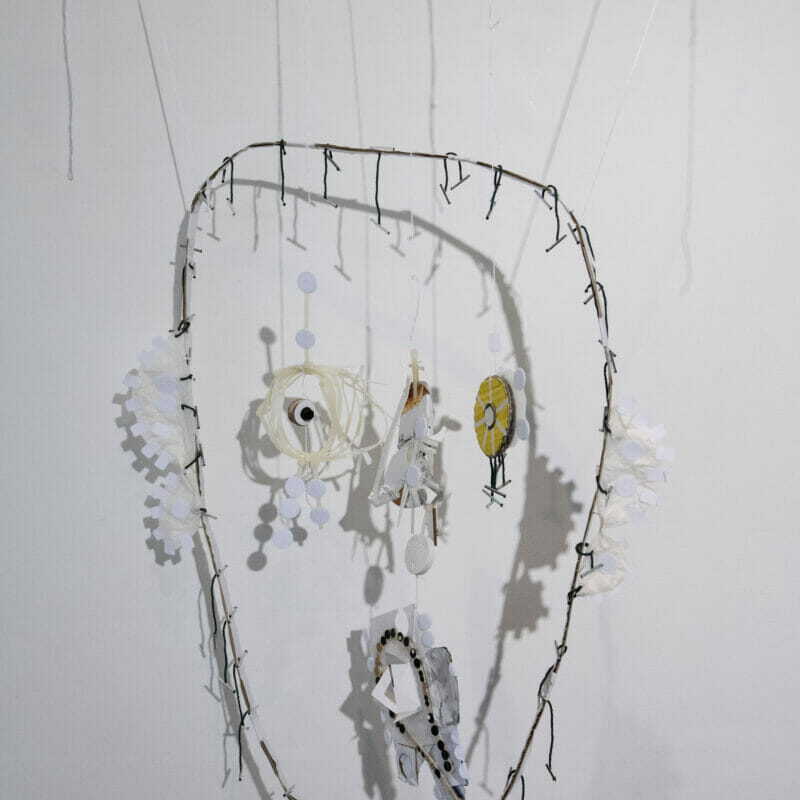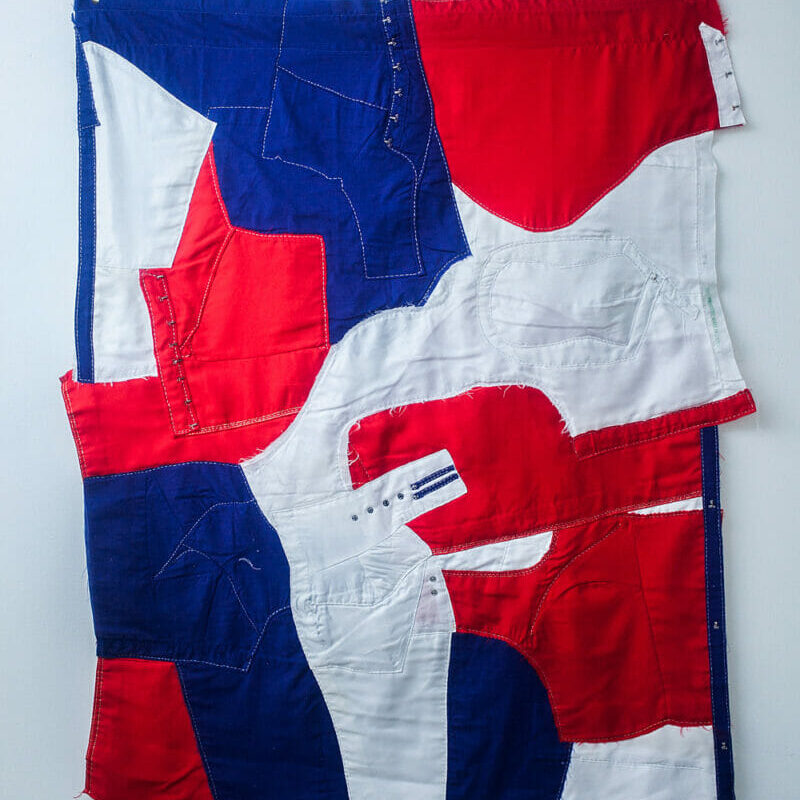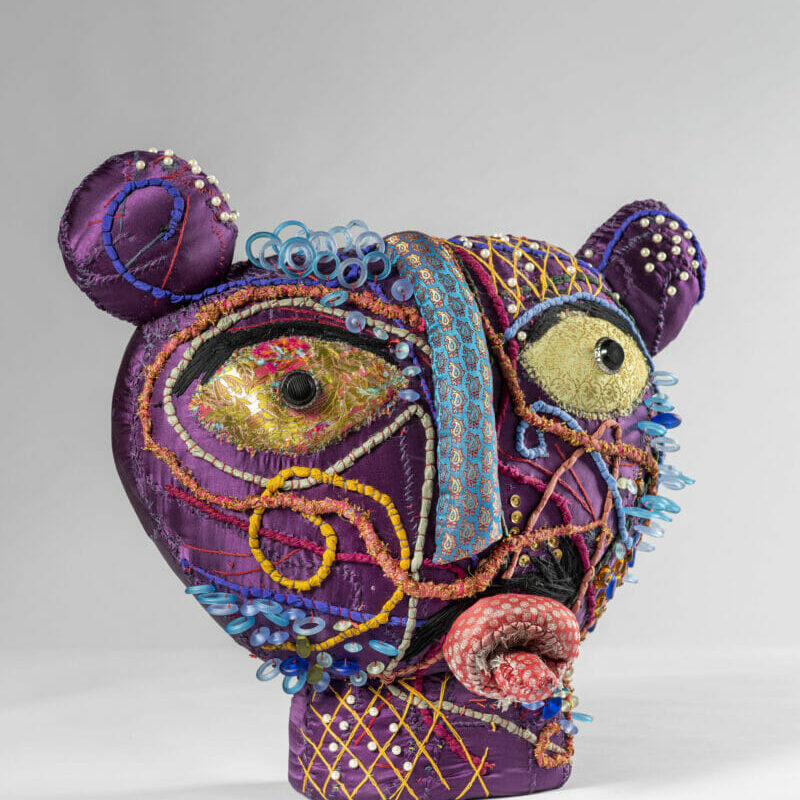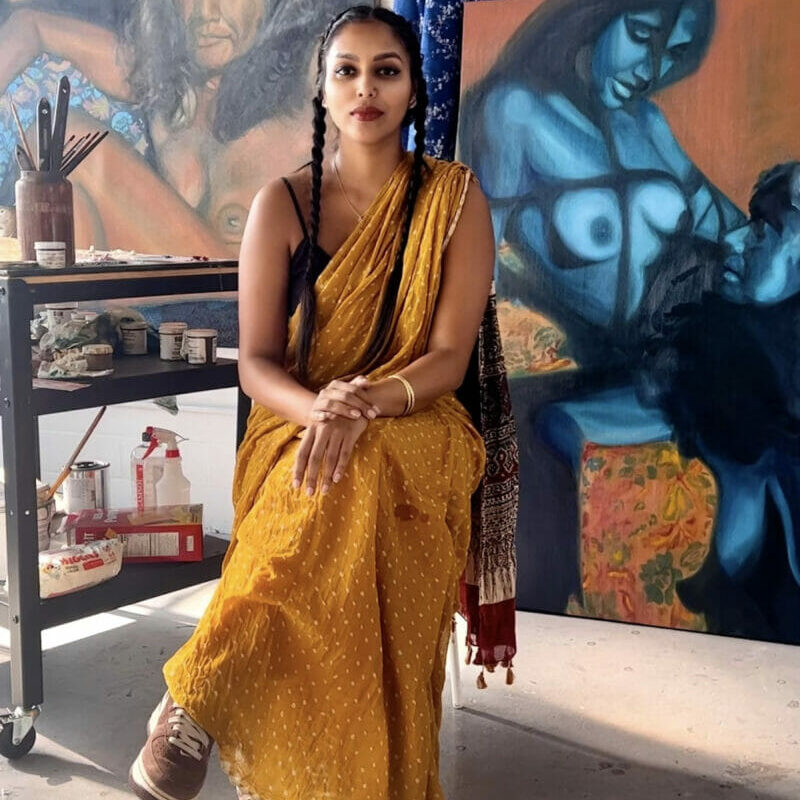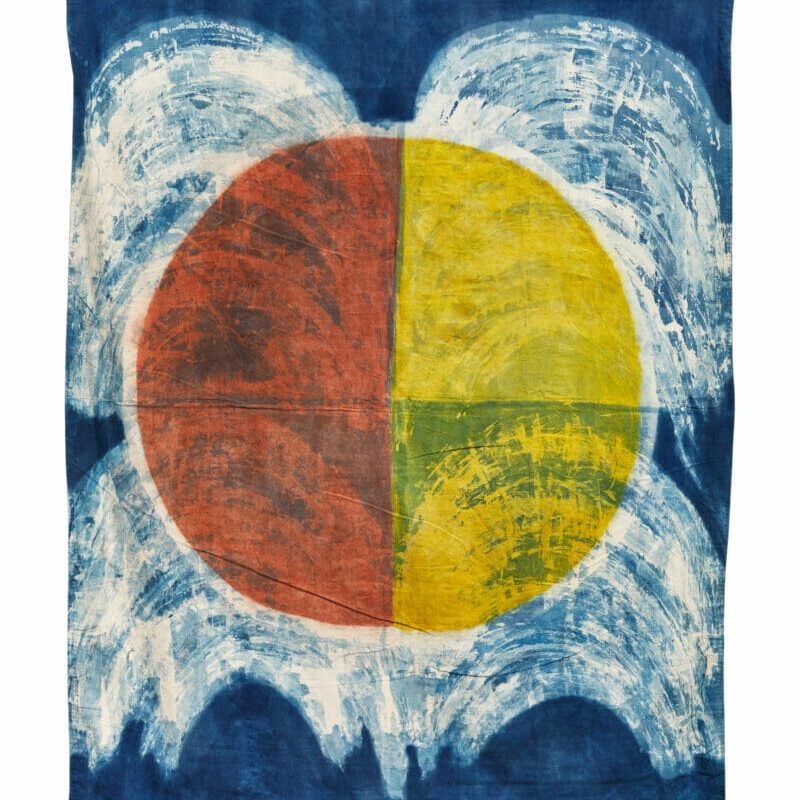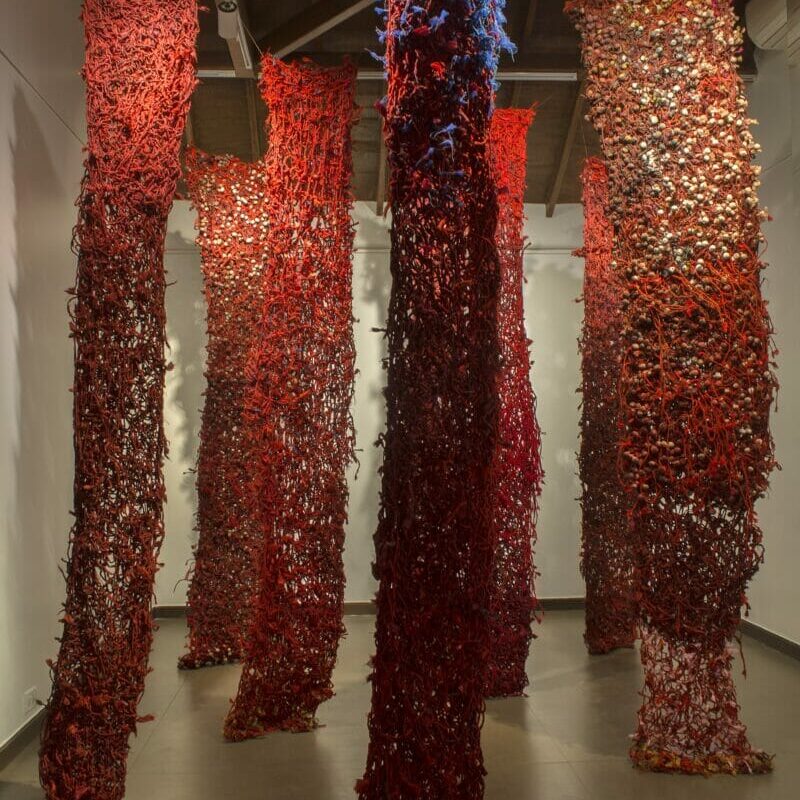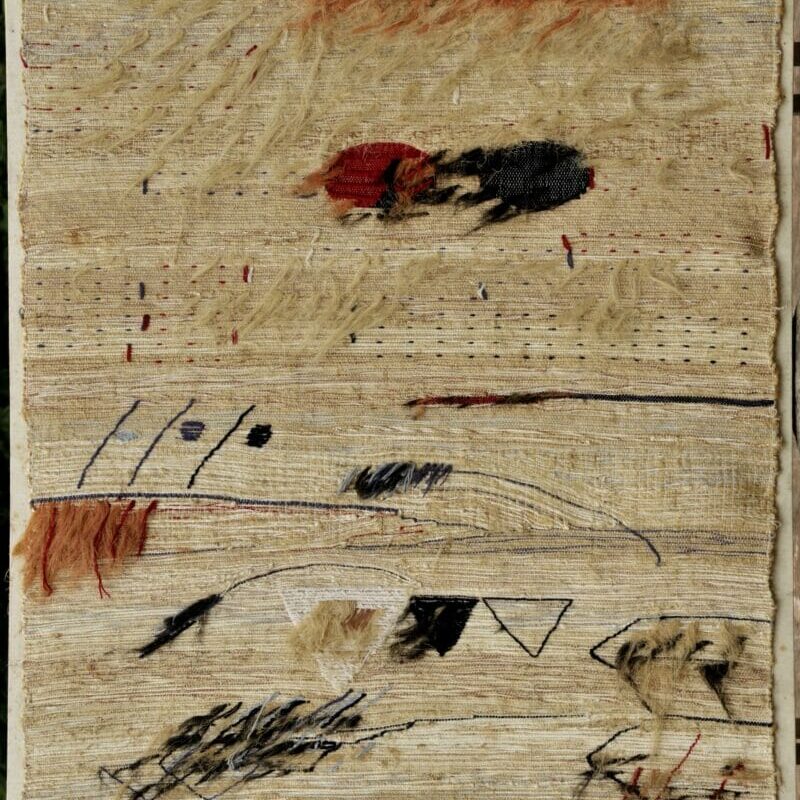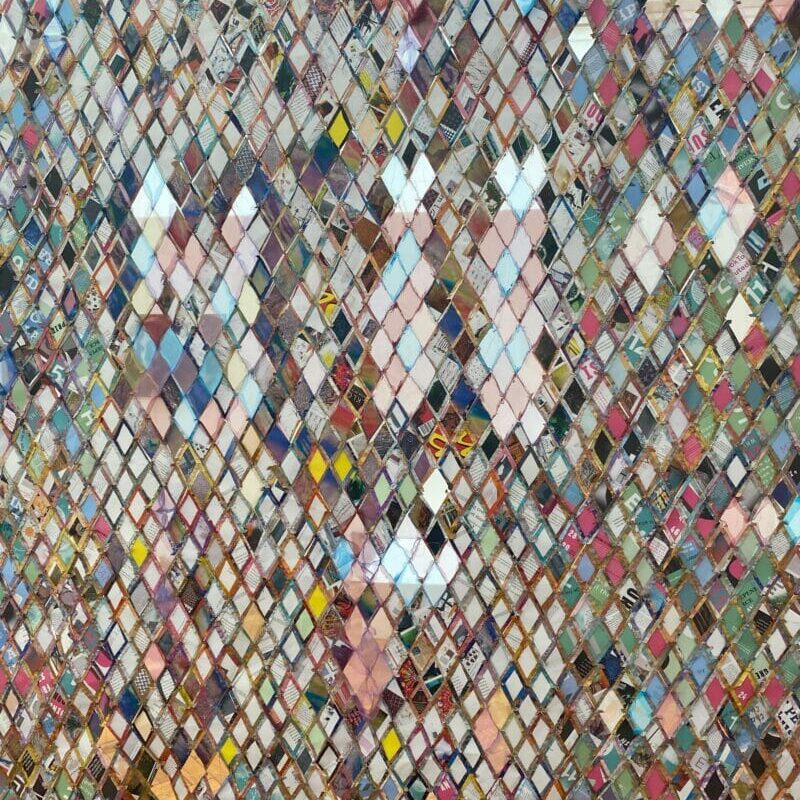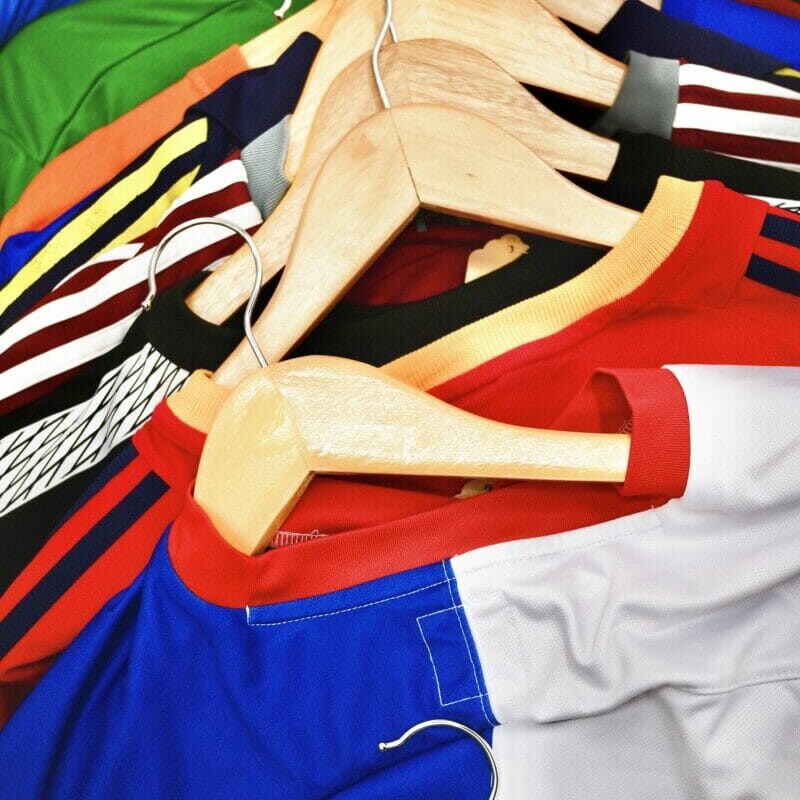British Textile Biennial 2023
29 Settembre – 29 Ottobre 2023
Lancashire, UK
La British Textile Biennial annuncia un programma che si concentra sulla questione della sostenibilità della produzione tessile, interrogandosi se questa possa mai essere considerata un’impresa rinnovatrice, dal punto di vista ambientale e sociale. Artisti dal Benin al Bangladesh presentano lavori che affrontano attivamente l’eredità del colonialismo, mentre altri guardano alla sua storia pre-industriale.

La terza edizione della British Textile Biennial 2023 (BTB23) ripercorre le tappe delle fibre e dei tessuti attraverso i continenti e i secoli, da e verso il nord dell’Inghilterra, in una serie di progetti e esposizioni che si svolgeranno per tutto il mese di ottobre negli spazi lasciati dall’industria tessile del Lancashire. Dalla cosiddetta “tela degli schiavi”, filata e tessuta a mano nelle brughiere della Pennina, alle balle di recupero della fast fashion che passano dalle strade britanniche ai mercati e alle montagne tossiche di rifiuti dell’Africa occidentale, BTB23 ripercorre questo viaggio.
I punti salienti della British Textile Biennial di quest’anno includono una conferenza di Gus Casely-Hayford, installazioni di Nest Collective, Victoria Udondian, Tenant of Culture e Thierry Oussou, una nuova performance del Common Wealth Theatre, nuove commissioni di Christine Borland, Nick Jordan e Jacob Cartwright, sculture di Jeremy Hutchison e una grande mostra di artisti dell’Asia meridionale provenienti da Pakistan, India, Bangladesh e Gran Bretagna.
Edificata dai suoi parrocchiani non conformisti nel 1765, la cappella di Goodshaw, nella ventosa brughiera della Pennina, è stata costruita in parte con i proventi del commercio dei cosiddetti “panni degli schiavi”, le rozze e resistenti stoffe di lana e lino filate e tessute a mano che trovavano mercati sempre più ampi nelle piantagioni delle nascenti colonie del 1700. In una commissione congiunta con l’English Heritage, gli artisti Nick Jordan e Jacob Cartwright hanno collaborato con artisti e storici locali per creare un’installazione nell’edificio dell’associazione che racconta la sua storia attraverso i secoli, accompagnata dalle leggendarie Allodole di Dean.
Realizzata nello stesso periodo della cappella, la Penistone Cloth Hall era il luogo in cui venivano venduti pezzi di stoffa filati e tessuti a mano nel Lancashire e nello Yorkshire. Di recente è venuto alla luce un minuscolo frammento di questo tessuto, noto come Penistone Cloth, con un’etichetta del XVIII secolo che lo descrive come “Inviato da Penistone per abbigliamento per Negri nel 1783, che per consistenza, resistenza e colore inalterabile è il più adatto a tale scopo“. Questo tipo di tessuto è stato utilizzato per vestire milioni di persone schiavizzate nei Caraibi e in America per duecento anni, nelle “piattaforme produttive” artificiali di zucchero e cotone che sono state i motori del colonialismo e del capitalismo. Questo pezzo prezioso ed estremamente significativo sarà esposto al Blackburn Museum, accompagnato da una linea del tempo che traccia la complessa storia globale che esso rappresenta.
La mostra al Cotton Exchange di Blackburn racconta il nostro rapporto problematico con il cotone in uno spazio che è esso stesso legato a quella storia. La sua apertura, nel 1865, coincise con il blocco nordista del cotone proveniente dalle piantagioni del Sud durante la Guerra Civile Americana, per opporsi alla riduzione in schiavitù delle persone trasportate dall’Africa, che fu sostenuta dai lavoratori dei mulini locali e, di conseguenza, non fu mai utilizzata per il commercio del cotone.
Per la prima volta verrà presentato all’Exchange il cotone grezzo, questa volta proveniente da 3 ettari di terreno in Benin, coltivato dall’artista Thierry Oussou con lavoratori locali e studenti di agraria. In questo modo, Oussou ricollega i puntini della produzione del cotone, evidenziando la sequenza di azioni che noi, come consumatori, spesso dimentichiamo. Il cotone rappresenta un’audace sfida a chiedersi se sia possibile invertire l’intero progetto capitalistico sregolato e se la produzione tessile possa mai essere un’impresa rigenerativa a livello globale. Sembra improbabile, come dimostra il Nest Collective di Nairobi nel suo filmato suggestivo che viene proiettato in una struttura costruita con balle di indumenti usati destinati alla discarica in Ghana dove, in un perverso scherzo della storia, i desideri scartati del nord globale vengono scaricati sulle comunità dell’Africa occidentale, bloccando l’economia tessile locale e contaminando l’ambiente.
Il monumentale wall hanging dell’artista nigeriana Victoria Udondian presiede lo spazio realizzato con lavoratori tessili rifugiati e immigrati a New York a partire da abiti di scarto spesso prodotti nei loro Paesi d’origine. Nella sua ombra, la passerella del Common Wealth Theatre offre ai visitatori una piattaforma per esprimere la propria moda per tutto il mese, fino all’ultimo fine settimana della Biennale, quando diventerà il palcoscenico per la loro performance interattiva creata con gli studenti di Burnley e i lavoratori dei mercati del Ghana, che mette a nudo il nostro colonialismo dei rifiuti. Nel frattempo, nel centro di Blackburn, le sculture-mostro di Jeremy Hutchison si aggirano per le strade, create con le balle di vestiti destinate all’Africa, per ricordare quello che lui chiama il nostro “imperialismo zombie”.
Non lontano dalla Goodshaw Chapel, a Helmshore Mill, il Tenant of Culture presenta Soft Acid che decostruisce il processo di produzione dei tessuti moderni. Per tutto il 1700, il governo approvò diversi Atti del Parlamento per regolamentare la produzione dell’industria cotoniera nel nord dell’Inghilterra, per arginare la produzione di articoli di cotone, mussola e calico, e la loro esportazione dall’India e per trasportare invece il cotone grezzo dalle piantagioni appena piantate nelle colonie americane a Liverpool e poi nel Lancashire. Nel frattempo, imprenditori ingegnosi come Arkwright di Preston e John Kay di Warrington cercavano di meccanizzare la produzion rapidamente, di far uscire i filatori e i tessitori dai cottage e dai fienili e di farli lavorare con le macchine. L’Higher Mill di Helmshore aprì nel 1789 e divenne un’impresa specializzata nel riciclaggio di indumenti di cotone per filare nuovamente le fibre.
La Whitaker Art Gallery di Rossendale fu costruita nel 1840 da George Hardman, proprietario del mulino su cui si affaccia tuttora. Il curatore Uthra Rajgopal ha presentato opere di artisti contemporanei dell’Asia meridionale provenienti da Pakistan, India, Bangladesh e Gran Bretagna: Madi Acharya-Baskerville, Robina Akhter Ullah, Bhasha Chakrabarti, Sayan Chanda, Ujjal Dey, Smriti Dixit, Melissa Joseph, Rehana Mangi, Dhara Mehrotra, Boshudhara Mukherjee, Yasmin Jahan Nupur, Kajal Nisha Patel, Liaqat Rasul, Gurjeet Singh e Sagarika Sundaram, oltre al Sibaprasad Karchaudhuri Living and Learning Design Centre di Shrujan – che esplorano il nostro impatto sull’ambiente, il nostro rapporto con i tessuti e i frammenti che ci lasciamo dietro.
Nell’installazione di Christine Borland al Pendle Heritage Centre, quattro film sono proiettati su una Projection Cloth di fustagno, una miscela di ordito di lino e trama di cotone, intrecciata nel tessuto di questo granaio medievale. Sviluppati grazie all’impegno personale dell’artista nella coltivazione, filatura e tessitura delle fibre vegetali, i film riflettono sulla vita delle donne nella transizione dal lavoro manuale, alla meccanizzazione e all’industrializzazione fino all’era digitale. Il lavoro tocca il simbolismo duraturo dell’arcolaio e della rocca nell’immagine demonizzata delle donne come streghe, che ha una particolare risonanza a Pendle, dove 10 donne e un uomo, alcuni dei quali erano filatori a mano, furono gli ultimi a essere impiccati in Inghilterra per questo reato nel 1612.
Nulla custodisce i ricordi meglio del tessuto. Tramandato di generazione in generazione per essere celebrato o trasmesso per protezione in tempi pericolosi, è mobile, rammendabile e racchiude i ricordi nei suoi fili. Material Memory è una mostra di oggetti tessili nello spazio suggestivo della cripta della Cattedrale di Blackburn, prestati dal pubblico, insieme alle storie che raccontano. Sono resi preziosi dalla cura con cui sono stati tenuti al sicuro, dal valore attribuito loro da coloro che ne hanno prolungato la vita e dai profondi legami che hanno creato, a volte attraverso secoli e continenti. Sfidando la cultura dell’usa e getta del nostro tempo, questa mostra dimostra il desiderio profondamente umano di tenere care le cose più semplici.
Tra le altre mostre e installazioni, Rebecca Chesney – Conditions at Present presenta un campo di maniche a vento che fungono da barometro della crisi climatica da noi stessi provocata. Common Threads, una riflessione sulle abilità di ricamo condivise tra donne di Karachi e gruppi di donne della diaspora dell’Asia meridionale che vivono nell’East Lancashire. L’artista multidisciplinare e operatore sociale Ibukun Baldwin lavora con il produttore di abbigliamento e marchio storico Cookson & Clegg in una co-commissione con il National Festival of Making. Gaining Ground, del programma Crafting Futures del British Council, con opere di artigiani e ricercatori provenienti da paesi di tutto il mondo. Mila Burcikova – A Life in Clothes, Litmus – Environmental Legacies of Cotton, Artists A&B – The Surplus Badge, Eva Sajovic – #End_of_Empire e Indigenitude – curata da Wahn Fan Chi e con la partecipazione di 3 artisti tessili e 4 documentaristi provenienti da 3 diverse nazioni indigene di Taiwan.
Inoltre, una serie di podcast con la storica della moda Amber Butchart e un’ampia serie di conferenze durante il mese in collaborazione con Creative Lancashire, che esamina la complessità di questa storia e il suo duraturo impatto globale, inaugurata da un discorso di Gus Casely-Hayford.












